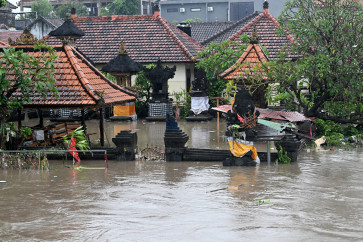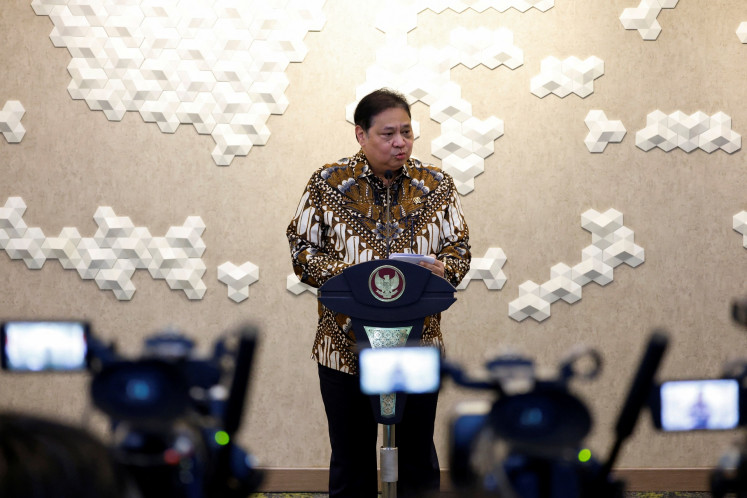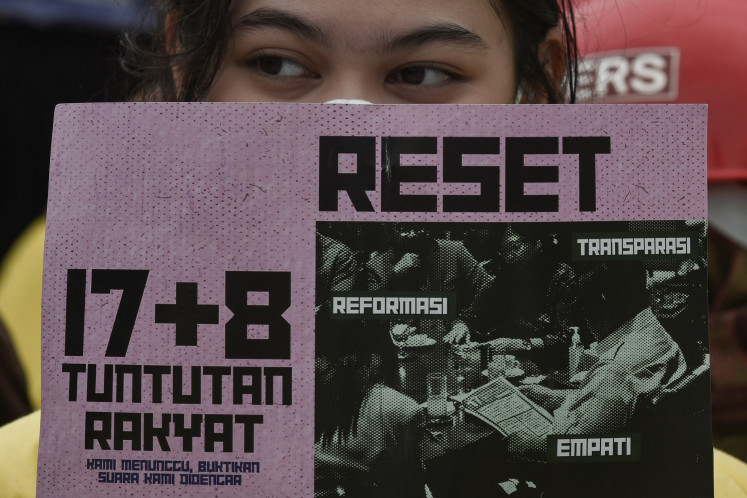Popular Reads
Top Results
Can't find what you're looking for?
View all search resultsPopular Reads
Top Results
Can't find what you're looking for?
View all search resultsExtending cooperation to combat sea piracy
The recent incident of a hijacked vessel, MV Sinar Kudus, by Somali pirates has renewed our awareness of maritime security, particularly in the sea territories of Southeast Asian countries
Change text size
Gift Premium Articles
to Anyone
T
he recent incident of a hijacked vessel, MV Sinar Kudus, by Somali pirates has renewed our awareness of maritime security, particularly in the sea territories of Southeast Asian countries. The incident received massive attention from the media for two reasons.
First, the number of attempted and successful attacks on ships by the Somali pirates itself has been increasing significantly lately.
According to the International Maritime Bureau (IMB), between 2006 and 2010 there were 279 reported cases.
A significant increase can be seen in 2008, 2009 and 2010, when the numbers of reported cases increased from 19 to 80, and then 139.
Second, the cases involving Somali pirates are unique because they ask for ransom in exchange for the lives of the ships’ crew members, instead of simply taking cargo and selling it on the black market.
Such cases have seen the public demanding on governments guarantee the safety of crew members against pirates.
The increasing awareness of Indonesia’s maritime security is indeed reasonable, considering the large number of attacks that took place within its territory despite years of fighting against sea piracy.
Compared to the Gulf of Aden and Somalia, the number of attacks in Indonesian waters alone between 2006 and 2010 was third-largest in the world, with 176 reported cases.
From a regional perspective, sea piracy is cause for concern among the governments of Southeast Asian countries for two reasons. First because of the trans-boundary character of maritime piracy.
It is known that the crime is not limited by national borders; the only limit to pirates’ movements is their ability to explore the high seas.
Second, the phenomenon has become a common concern in the region. For instance, during the same years, there were 63, 26, and 25 reported cases in Malaysia, the Singapore Strait and the Philippines. These numbers further emphasize that maritime piracy is a serious threat faced by many countries in Southeast Asia.
Peter Chalk (2000) analyzes that there are at least two major phenomena that have caused the increase in piracy in the region.
The end of the Cold War has decreased the control by the superpowers over the oceans.
The US, Russia and the UK have significantly reduced their presence around the world, resulting in less control and monitoring over the high seas.
The Asian crisis in 1997-8 also contributed to a growth of piracy in the region in two ways.
First, economic turmoil caused many people to lose their jobs, while prices increased. As is the case with many other crimes, piracy is a bad alternative usually chosen by people to make ends meet.
Second, the crisis also forced the governments to cut their budgets, including for defense. This obviously reduced their military capacity to conduct naval operations to secure their maritime territories.
Initially, a regional initiative to cover piracy as a security issue began in 1997, when representatives of ASEAN governments signed the Declaration on Transnational Crime.
The Declaration, followed by the ASEAN Plan of Action to Combat Transnational Crime in 1999 and the Work Program in 2002, widened the definition of transnational crime to cover sea piracy as well as drug trafficking, human trafficking, money laundering, terrorism and arms smuggling.
In the case of sea piracy, the Work Program recommends six fields of cooperation, including information exchange, legal and law enforcement cooperation, training, institutional capacity-building and extra-regional cooperation.
On a more practical and technical basis, three Southeast Asian countries — Indonesia, Malaysia, and Singapore — launched a coordinated patrol under the name Malsindo in July 2004. The patrol, focused on securing the Malacca Strait, at first only involved 17 warships.
Later, Malaysia proposed additional air patrols through the Eyes in the Sky (EiS) initiative. Through this mechanism, each state was to designate maritime patrol aircraft to monitor the area around the Malacca and Singapore Straits.
The initiatives were considered a success. At least in terms of quantity, the number of reported attacks taking place in the Malacca Strait dropped significantly from 11 in 2006 to merely 2 in 2010.
While it is difficult to gauge the impact of the decline to economic development, it is safe to say that the joint or coordinated patrols succeeded in securing the Malacca Strait.
Learning from the success of the Malsindo project, we may expand the cooperation to other areas prone to pirate attacks.
The 2010 IMB report notices that areas such as the South China Sea and Vietnam waters are dangerous, with 31 and 12 attacks in those areas.
The lack of resources and armada would obviously be the major obstacle to countries that wish to work alone to secure their territories.
However, it must be admitted that sovereignty will raise a big problem when conducting joint patrols.
To complicate the matter, Southeast Asian countries also have been unable to resolve numerous disputes over maritime borders among themselves.
Even among the Malsindo participants, such disputes created difficulties, especially when designing the Standard Operating Procedures (SOP). Each country’s fleet would have to be very careful not to cross the borders and enter its neighbors’ jurisdiction.
One possible solution is to adopt a mechanism where entering the neighbor’s territory to a certain distance and in specific circumstances will not be considered a breach of sovereignty, for instance in the event of a chase of a pirate ship.
Once again, it must be admitted that there is a huge gap between Southeast Asian countries’ fleets’ and patrol units’ capabilities, especially in terms of speed and equipment.
The pirates know this very well and quite often this situation helps them to avoid arrest.
Therefore, such a mechanism should be taken into account in order to combat piracy.
Economic development alone will be insufficient to curb the number of transnational crimes in Southeast Asia, including piracy. For that reason, law enforcement and, when necessary, military frameworks must be implemented.
A regional cooperation then would be inevitable, now that piracy has become a shared concern.
The writer is an assistant lecturer in international relations at the University of Indonesia in Depok, West Java.










